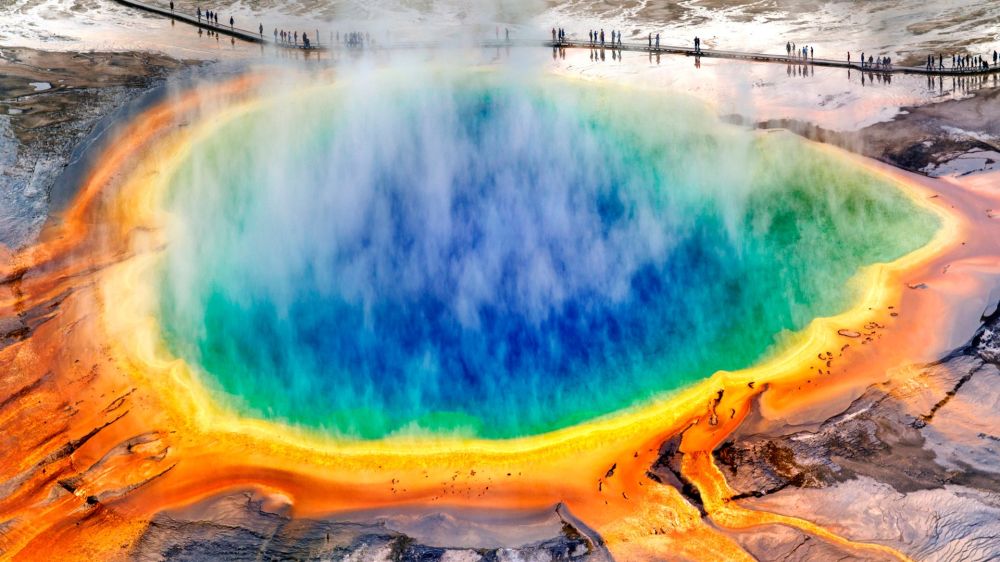- The U.S. Forest Service and National Park Service are cutting 4,400 jobs as part of Trump’s federal budget reduction plan, primarily affecting probationary employees. The layoffs, which amount to 10% of the Forest Service workforce and 5% of National Park Service staff, have raised concerns about understaffing, park maintenance and wildfire prevention.
- The hiring freeze has rescinded over 2,000 seasonal and permanent job offers, leaving national parks struggling to prepare for record-breaking visitor numbers.
- Fire prevention efforts have also been disrupted, with federal grants frozen and seasonal firefighter hiring stalled, just months ahead of the critical summer wildfire season.
Full Story
The U.S. Forest Service and National Park Service are set to fire thousands of workers as part of the Trump administration’s push to trim federal spending. The cuts, which primarily target employees in their probationary periods, have sparked concerns over understaffing, park maintenance and wildfire prevention efforts.
How many jobs are being cut?
The U.S. Forest Service will terminate 3,400 recent hires, while the National Park Service (NPS) will cut 1,000 employees, according to a report from Reuters. The layoffs amount to 10% of the Forest Service workforce and 5% of NPS staff.
While the cuts affect a large portion of the workforce, some positions are exempt, including firefighters, law enforcement officers, certain meteorologists and 5,000 seasonal workers.

Download the SAN app today to stay up-to-date with Unbiased. Straight Facts™.
Point phone camera here
Which national parks and landmarks will be affected?
The layoffs will impact operations at several major national parks and landmarks, including:
- Yellowstone National Park
- The Appalachian Trail
- The birthplace of Martin Luther King Jr.
- Sequoia National Forest
Without adequate staffing, visitors could see reduced park services, maintenance issues, and a decline in overall park experience.
What do experts say about the impact?
The National Parks Conservation Association has issued a stark warning about the consequences of these staffing reductions.
Kristen Brengel, NPCA’s senior vice president of government affairs, stated:
“Visitors from around the world come to our national parks expecting a once-in-a-lifetime experience, but instead could be met with overflowing trash, uncleaned bathrooms, and fewer rangers to provide guidance.”
Additionally, the federal hiring freeze has further complicated park operations. More than 2,000 seasonal and permanent positions have been rescinded, adding to a growing staffing crisis.
Why is there a hiring freeze at national parks?
The Trump administration has enacted a widespread hiring freeze, impacting government agencies across the board.
This decision comes at a time when national parks are seeing record-breaking visitor numbers:
- 325 million visits in 2023 (an increase of 13 million from 2022)
- Park staffing levels have dropped by 20% since 2010, even as visitation has surged by 16%
Without seasonal workers and full-time rangers, park maintenance and visitor services will struggle to keep up with demand.
How will these cuts affect wildfire prevention?
Federal wildland firefighting efforts have also been negatively impacted by funding freezes and hiring delays.
The Lomakatsi Restoration Project, a nonprofit focused on wildfire mitigation in Oregon, California, and Idaho, has reported that more than 30 federal contracts and grants have been frozen.
Marko Bey, the project’s executive director, wrote in a letter to Sen. Jeff Merkley, D-Ore., saying, “The funding freeze has impacted more than 30 separate grants and agreements… already putting work on the ground.”
This funding delay is particularly concerning given the recent record-breaking wildfires in Los Angeles, which are expected to be the costliest in U.S. history.
Did the White House reconsider the funding freeze?
In late January, the White House paused federal grants, causing further uncertainty for national parks and forestry programs.
Two days later, the administration reversed the decision but the uncertainty surrounding future funding remains.
John Garder, NPCA’s senior director of budget and appropriations, voiced concern, saying, “The most troubling part of this directive is that it’s leaving countless staff anxious about losing their jobs at any moment.”
Are remote workers affected by the budget cuts?
The Trump administration has also ended remote work for federal employees, forcing 2,800 National Park Service workers, including human resources, IT and communications staff, back to in-person roles.
This decision could lead to a wave of resignations, as many remote employees are based in high-cost areas near national parks, where affordable housing is scarce.
What is Congress doing about this?
Congressional Democrats are urging the administration to restore funding for:
- Wildfire prevention
- National park maintenance
- Seasonal firefighter hiring
The Grassroots Wildland Firefighters advocacy group has also raised alarms over the inability to hire seasonal firefighters at a critical time before the summer fire season.
Riva Duncan, vice president of the group, said Trump’s recent actions have made issues at the national parks worse.
“The agencies already have had a recruitment and retention problem. This just exacerbates that problem,” Duncan said.
 Getty Images
Getty Images
 Getty Images
Getty Images
 Getty Images
Getty Images